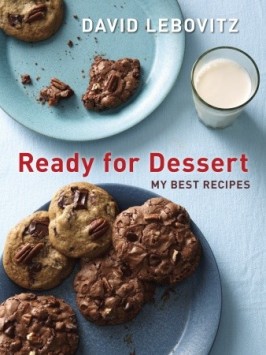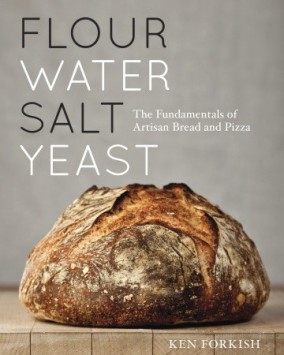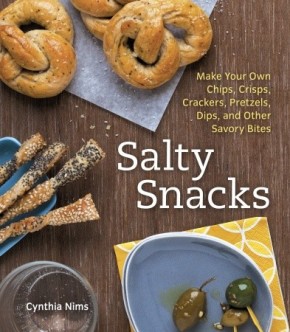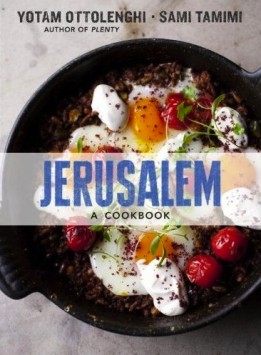Fire and IceClassic Nordic Cooking
Bringing the best of Scandinavian home-cooking into your kitchen, Fire and Ice: Classic Nordic Cooking offers over 100 delicious recipes that showcase this region’s most beloved sweet and savory dishes.
Scandinavia is a region of extremes—where effortlessly chic design meets rugged wilderness, and perpetual winter nights are followed by endless days of summer—and Fire and Ice proves that Scandinavian cuisine is no exception. Founding editor of Gastronomica and the West’s leading culinary authority on the cuisines of the European North, Darra Goldstein explores the rich cultural history and culinary traditions of Denmark, Finland, Norway, and Sweden. From the bold aroma of smoked arctic char to the delicate flavor of saffron buns, and from the earthy taste of chanterelle soup to the fragrant aroma of raspberry-rose petal jam, this beautifully curated cookbook features over 100 inspiring and achievable recipes that introduce home cooks to the glorious and diverse flavors of Nordic cooking.
Darra Goldstein has spent much of the last four decades falling in love with Scandinavia; its people, its landscape, and most of all, its food. She is the founding editor of the James Beard Award-winning journal Gastronomica and a professor of Russian at Williams College. Goldstein has authored or edited more than a dozen books, including The Georgian Feast, which won the 1994 IACP Julia Child Award. She lives in Williamstown Massachusetts.
After a long tenure as head of Gastronomica Darra Goldstein felt the pull to get back into the kitchen. It was her love of Scandinavia that proved to be just the thing. She recently spoke to us about her book Fire + Ice wich also happens to be on our list of the Top Food Books of 2016.
BooksAboutFood.com (BAF): How did the book come about?
Darra Goldstein: I first went to Finland in 1972 in an attempt to get to the Soviet Union. I couldn’t get a visa to go there as a student, it was the height of the Cold War. I thought if I can go someplace close then maybe I can come across over the border and be a tourist. So, I enrolled at the University of Helsinki and I was just astonished at what an extraordinary county Finland was.
Then eight years later I found myself once again trying to get to the Soviet Union. This time it was 1980, the year of the Moscow Olympics and the Soviets had just invaded Afghanistan and the Americans pulled out of the Olympics and in retaliation the Soviets denied visas that had already been granted to graduate students for study. Mine was denied and so I thought what is another Northerly place that has that same kind of darkness and beautiful light but will also allow me perhaps to get to the Soviet Union. I was newly married and we went to Stockholm and spent a year there.
Those experiences were the beginnings of my love affair with Scandinavia and Finland and I later did some work for the Norwegian ministry of culture and spent quite a bit of time in Norway. When I decided to write another cookbook after giving up Gastronomica I’d spent something like, twenty years really writing about food and not being in the kitchen. I missed that sensual aspect of working with food, of smelling food, so when I was thinking what kind of cookbook would I like to do, suddenly it seemed like the most natural thing for me to write about this part of the world that was so important to me.
BAF: It strikes me that with cuisine from the Nordic countries, especially in the summer, there is real sensual, celebratory aspect to them because everything has come alive again.
Darra Goldstein: Absolutely. For anyone who lives in a cold climate, you know that when the snow covers the ground for many months of the year and you have that first warming of spring and the Earth smells really beautifully rich and alive and the first greens start poking up. Things like nettles, and fiddleheads and then comes the progression of mushrooms and amazing berries, particularly in Finland which has something like fifty different kinds of wild edible berries. You seize those glorious moments of growth and it really is a celebration.
BAF: Maybe this touches on that somewhat, but what’s the distinguishing of these cuisines?
Darra Goldstein: What I would say is that today in the United States, at least among a certain segment of the population that identifies itself as ‘foodies’, or consumers who are aware of the sources of their food. We have these buzzwords of local and sustainable and seasonal and all of those good things we like to talk about and I would say that in the Nordic countries those terms are more than just buzzwords.
For centuries their entire survival depended on gathering the fruits of the summer, the riches, the treasures of the woods. Food that was only available on briefly and preserving it so that they could then get through the long winter and survive. So what really distinguishes the cooking of North is the beautiful freshness and bursting with flavor of late spring, summer, and early fall produce whether its foraged or cultivated. And then a transformation of flavors that becomes very, very intense though different processes of preserving, particularly curing with sugar and salt like you might find with Gravlax. Brining. The pickles are often put into a salt brine and allowed to ferment, regular pickling with vinegar. In Norway, it was drying because there was this wonderful salt air that was used to dry cod and still is, and also, smoking, you have a kind of seasonal rhythm of fresh flavors moving to evermore intensely transformed flavors through the human touch.
BAF: It’s almost as if there is two separate halves to this cuisine. You have the summer and the festive season, then you have the preserve season; the winter and the dark season.
Darra Goldstein: You do, although if you do the preserving right, if you think of something like lingonberries, which are one of my absolute favorite berries. They are like small cranberries. They happen to have a lot of natural benzoic acid, which if you look on the labels of a lot of processed foods, you see benzoic acid as a preservative, but in ligonberries it’s natural. It’s part of what they contain; so they don’t even need to be cooked. You just stir them with sugar, and they do need sugar, because they are very, very tart. Then they will keep for months and months. If you open a crock or a jar of what in Swedish is raw stirred ligonberries, it’s like having a burst of summer and brilliant color on your winter table. Same with things like cloudberries, which the Fins and Swedes and Norwegians really love. They put those up, they often freeze them, and then they bring out these golden berries in the middle of winter. So winter isn’t entirely dark there. There are a lot of ways to bring light and brightness to it. I think too of the saffron buns that are served in Sweden on December thirteenth, St Lucia’s Day, and they’re really golden. It’s like bringing sun into the dark house.
BAF: Places like Noma with Rene Redzepi and Fäviken with Magnus Nilsson they seem to be going back to the roots of their respective localities.
Darra Goldstein: For so many years until the new Nordic culinary movement took off, the high end restaurants in these northern countries really were looking to a French style of cuisine. You know the classical training of chefs. And in fact the Bocuse D’Or competition is regularly won by the Norwegians who are extraordinarily skilled in classical technique.
So new Nordic caused people to look around them and their own environment and see what there is and really start appreciating that and many of the techniques. In a way new Nordic is a misnomer because many of the techniques are very old but they also take these older foods and methods of preserving them and give them a very new twist. So Noma for example has an entire lab devoted to experimenting with different foods and bringing out different properties in them. Rene Rencepi has also traveled to Mexico and Tokyo and other places, and so he is not solely focused on what comes right from the region of Copenhagen but is looking for inspiration else where, while still celebrating what the northern lands have to offer.
BAF: What misunderstandings are there of Nordic food?
Darra Goldstein: I think that in the United States, partly because of Lake Wobegon and Prairie Home Companion, there’s this idea of the Scandinavian immigrants who came to this country, being sort of dullards, and their food being bland, and there’s Lutefisk, which is the preserved, very gelatinous cod.
And their potatoes. Of course potatoes are a relatively recent introduction in historic terms. So there’s a sense that it’s bland and it’s heavy and it’s almost as dimwitted as the people who are serving it. Which couldn’t be further from the truth because Scandinavian society is absolutely vibrant if you think about not simply its food, but its whole history of design, its social systems, its very progressive and quite wonderful region. But the food too is filled with bold sparkling flavors. So, I think that would be the greatest misconception.
BAF: Can I ask a little bit about the actual writing of the book? It’s such a vast territory.
Darra Goldstein: I had originally had wanted to think about the region as a kind of northern dimension to erase political boundaries and really start in the far East of Russia and trace a lot of the food through Finland, Sweden, Norway, down into Denmark over to the Faro islands and Greenland and then to Iceland. And talk about a northern way of thinking, a northern way of surviving. All of these countries are defined by a very long coastlines, so the sea has played a really important part in terms of survival. For marketing the book my publisher, probably rightly felt, that Russia should not be a part of the story. It was better to focus on Nordic, which people understand now and respond to. Then I thought, well if Russia’s not there, I’m not going to go beyond the boundaries of the four core countries that have in many ways, similarities among their foods, one of them being, gravlax, the cured salmon. And there a lot of regional differences. There is a great distinction between, say the south of Sweden and Denmark, which had very similar cuisines. Then the far North, up above the Arctic circle in the other countries but Iceland has a very different culinary tradition, so I decided just to focus on these. They are also the countries I know best, so I was able to write about them with some depth and discernment.
And actually the Swedes, when I would refer to Finland as Scandinavia would remind me that technically it’s not part of Scandinavia. It has a very different language that’s not mutually comprehensible. Its culinary traditions were more influenced by the Imperial Russian court and not the French court. Although, you know, if you carry it back far enough that was influenced by the French back in the nineteenth century. It has more of a Russian overlay you could say to some of its dishes particularly in the eastern part of the country where those political boundaries have shifted over the years.
BAF: Can you tell us a little about the photos?
Darra Goldstein: A Wonderful, wonderful Swedish photographer named Stefan Wettainen, and when we were talking about this book and what it would look like, Ten Speed sent me portfolios from five or six different photographers that they thought might be appropriate for the book, and the minute I saw Stefan’s I was just in love. I think he really captures both the moodiness of the place but also the radiance. His photographs capture the exquisite quality of light that you find in the North and I really wanted to book not to be entirely filled with food style photographs. Obviously in a cookbook we want some of those because you want to see the food and it looks like. But the bulk of the photographs are actually meant to evoke place; so it’s usually through the pages you feel as though you are there or almost there, because you really get a sense of the landscape of the environment of the people who are within it.
BAF: I don’t think they fully appreciate the vastness and certainly the light aspect and the seasonality that is there.
Darra Goldstein: I wanted the book to convey the gorgeousness of the north and its … If you look at the cover, those colors. The lavender and the grey and the way those triangles have been glossed and it sort of shimmers when you hold it up to the light. I didn’t want people to think of the north as bleak and baron. I wanted to convey its special qualities but also to show that even in places that you think of as not being hospitable to growing food, you have an enormous repertoire of foods that you can work with. Certainly in the Summer in the far north when the sun shines for twenty-four hours, the plants are getting so much chlorophyll from the sun that they’re intensely flavored. That was an interesting discovery for me because if you think about the Mediterranean, the ‘sun kissed’ orange; you know everything kissed by the sun. They get more sun, granted it’s brief but it is very intense so the herbs and the produce is really wonderful there.
BAF: Do people are much more in tune with what’s grown and where you can find it and appreciate the abundance of their wilderness?
Darra Goldstein: It’s true and it’s really a cultural institution to go out and pick berries or gather mushrooms. It’s not so much, “oh lets go on a foraging trek on Saturday” or something. It is a deep connection with nature. It’s just a way of reconnecting with ones self and finding a healthy balance in one’s life so it is part of the seasonal rhythm.
Copyright 2016 Booksaboutfood.com
“Darra Goldstein is the best kind of food scholar. She’s a gourmet and a gourmand, driven by equal parts hedonism and curiosity. Both are here on full display in this Nordic cookbook and culinary genealogy, providing a delicious context for the region’s modern food revolution.”
-Dan Barber, co-owner and executive chef of Blue Hill and Blue Hill at Stone Barns, and author of The Third Plate
“Darra Goldstein’s recipes defy the stereotypes of Scandinavian cuisine. This cookbook isn’t about rotten shark or Swedish meatballs; these dishes beautifully capture a people who cannot help but be completely in touch with the elements, the land, and the sea.”
-Nathan Myhrvold, coauthor of Modernist Cuisine and Modernist Cuisine at Home, and author of The Photography of Modernist Cuisine
“This book—full of stunning imagery and all the Nordic staples of home cooking—is a must-have for anyone interested in this amazing region.”
-René Redzepi, chef, co-owner of Noma, and author of Noma: Time and Place in Nordic Cuisine
“I dare you to read this book without wishing you were born Scandinavian. The food looks so delicious and the pictures are so gorgeous that you can’t help feeling you were born in the wrong place. This tantalizing introduction to Nordic foods is like no cookbook on the market. Open it at your peril. It will make you want to travel. And it will make you want to cook.”
-Ruth Reichl, author of Delicious, and former editor in chief of Gourmet magazine
Gubbröra-(Egg Salad with Swedish Anchovies)
Uunihaukea sienten ja pinaatin kera-(Baked Pike with Mushroom and Spinach)
Mansikkakakku-(Strawberry Meringue Cake)![]()
Gubbröra-(Egg Salad with Swedish Anchovies)
LIKE JANSSON’S TEMPTATION (page 207), this appetizer is often served late at night with cold beer and schnapps. Literally, the Swedish word gubbröra means “old man’s mix”—the dish is so zesty that it will perk anyone up, even an old man, and is intended to enliven a party that’s in danger of winding down. The kick comes from the Swedish anchovies (see Sources), which lend a salty-sweet tang. Soft-boiled eggs make the salad extra creamy and rich. This recipe comes from Mia Gahne, a marvelously talented food writer and stylist whose exquisite eye and playfulness are displayed in the photos of this book. Although gubbröra is usually served on dark bread or crispbread, it looks adorable when presented in eggshells, as Mia likes to do.
SERVES 4
1 (4.4-ounce) can Swedish anchovies
1 small red onion, minced (about 1⁄2 cup)
1 tablespoon butter
4 eggs, at room temperature
1⁄2 cup finely chopped fresh parsley
Dark bread or crispbread, for serving (optional)
Freshly ground pepper to taste
1 (2-ounce) jar whitefish roe, for garnish (optional)
Finely chopped fresh dill or chives, for garnish
Drain the anchovies, reserving some of the brine, and chop them into small pieces. Set aside.
In a small frying pan over low heat, gently cook the onion in the butter for 3 to 4 minutes. When the onion softens, add the anchovies and stir until “melted,” about 30 seconds. Stir in a little of the reserved brine. The amount of brine depends on how salty you want the dish to taste. Keep the mixture warm over very low heat.
Meanwhile, place the eggs in a pot and add enough water to cover. Bring to a boil, then lower the heat so that the water is simmering rapidly. Cook the eggs until the yolks are just set, about 5 minutes. Pour off the water from the pan and immediately run cold water over the eggs to stop further cooking.
Stir the parsley into the warm anchovy mixture. Crack the eggs and scoop them right into the pan, breaking them up with a rubber spatula.
Leave the mixture on low heat for a half minute or so, just long enough for it to warm through. Be careful not to overcook the gubbröra or the eggs will turn rubbery.
Spoon the gubbröra onto dark bread or crispbread, or serve it with a small spoon in eggshells (see note). Grind a generous amount of pepper onto each serving. If desired, top with a spoonful of whitefish roe. Garnish with finely chopped fresh dill or chives.
NOTE: If you want to present the gubbröra in eggshells, use an egg topper or sharp knife to cut a crosswise band through each shell so that you can use the half shells for serving. It’s fine if the edges are a little jagged.![]()
Uunihaukea sienten ja pinaatin kera-(Baked Pike with Mushroom and Spinach)
 THE DELICIOUSNESS OF this dish depends on the quality of the ingredients you use. Like so many Nordic preparations, the recipe is as basic as nature itself. You combine river (pike), forest (mushrooms), and earth (herbs). If, like me, you don’t live near any cold bodies of water, you’ll need to ask your fishmonger to order a whole, gutted pike. For the mushrooms, chanterelles, hen-of-the-woods, and black trumpets are especially flavorful, but in a pinch you can use shiitake, oyster mushrooms, and portobellos. If all the components are fresh, this dish will dazzle. Baked pike often graces the Christmas table in the Finnish archipelago.
THE DELICIOUSNESS OF this dish depends on the quality of the ingredients you use. Like so many Nordic preparations, the recipe is as basic as nature itself. You combine river (pike), forest (mushrooms), and earth (herbs). If, like me, you don’t live near any cold bodies of water, you’ll need to ask your fishmonger to order a whole, gutted pike. For the mushrooms, chanterelles, hen-of-the-woods, and black trumpets are especially flavorful, but in a pinch you can use shiitake, oyster mushrooms, and portobellos. If all the components are fresh, this dish will dazzle. Baked pike often graces the Christmas table in the Finnish archipelago.
SERVES 4
1 yellow onion, finely chopped
3 cloves garlic, finely chopped
2 tablespoons unsalted butter
12 ounces wild mushrooms, trimmed and finely chopped
1 cup cooked spinach, squeezed dry and chopped
1⁄4 cup minced fresh herbs (such as parsley, dill, chives, and chervil)
1⁄2 teaspoon salt, plus more for rubbing
Freshly ground pepper
1 whole pike, about 2 to 21⁄2 pounds, scaled and gutted
2 or 3 thick slices bacon
In a large skillet over medium-low heat, sauté the onion and garlic in 1 tablespoon of the butter until golden, 6 to 8 minutes. Add the remaining tablespoon of butter to the pan, then stir in the mushrooms. Continue to cook over medium-low heat for 10 minutes, stirring occasionally, until the mushrooms are cooked through and all of the moisture evaporates. Stir in the spinach, herbs, and salt. Season with pepper and stir again until well combined.
Preheat the oven to 425°F. Rinse the fish and pat dry with paper towels. Rub the fish liberally with salt and pepper all over, inside and out, then fill the cavity with the mushroom mixture (reserve the leftover mushroom mixture for garnish). Either sew the cavity shut with kitchen twine or use trussing skewers.
Butter a large roasting pan and place the fish in it. Lay 2 or 3 strips of bacon lengthwise over the fish to moisten it as it bakes.
Roast for 25 to 30 minutes, until the fish is flaky. Remove the twine or skewers. Transfer the fish to a platter and spoon any leftover mushroom mixture decoratively around it. To carve the fish, use a fish knife and fork to remove the skin, then slide the knife along the backbone to free the top fillet. Cut the fillet in half and transfer the pieces to serving plates, along with some mushroom filling. Then lift off the backbone to reveal the second fillet. Cut it in half and plate.![]()
Mansikkakakku-(Strawberry Meringue Cake)
 SERVES 8
SERVES 8
THIS CAKE IS, quite simply, a showstopper. With mounds of fresh strawberries layered between billows of whipped cream and disks of slightly chewy almond meringue, it tastes as fabulous as it looks.
1 cup blanched almonds
11⁄2 cups plus 2 tablespoons sugar
6 egg whites
Pinch of salt
11⁄2 cups heavy cream
1⁄4 teaspoon pure vanilla extract
2 cups strawberries, sliced
Preheat oven to 350°F. Place the almonds on a baking sheet and toast until just golden, 6 to 8 minutes. Lower heat to 250°F.
Transfer the almonds to the bowl of a food processor. Add 1⁄2 cup of the sugar and pulse until the almonds are finely ground.
Place the egg whites in the bowl of a stand mixer and beat on high speed until foamy. Add the salt and gradually beat in 1 cup of the sugar until stiff peaks form. Continue beating on the highest speed until you have a stiff, shiny meringue, about 3 minutes more. Gently fold in the almond mixture.
Line a large baking sheet with parchment paper. With a spatula, carefully spread the meringue into two 8-inch rounds, smoothing the tops. Bake until pale gold, about 1 hour. Then turn off the heat and prop the oven door ajar with the handle of a wooden spoon. Let the meringues dry in the oven for 2 hours more, until no longer sticky to the touch.
When the meringue layers are ready, whip the cream with the remaining 2 tablespoons of sugar and the vanilla until stiff but not dry. Carefully transfer one meringue layer to a cake plate. Spread 1⁄2 cup of the whipped cream over the layer and top the cream with half of the strawberries. Cover the strawberries with another 1⁄2 cup of the whipped cream. Place the second meringue layer on top of the filling. Decoratively pipe the remaining 1⁄2 cup of whipped cream around the edge of the meringue layer, and fill the center with the remaining sliced strawberries.
Refrigerate the cake for 1 hour before serving to allow the flavors to meld. It can be held for up to 4 hours before it begins to weep. Let it stand at room temperature for 15 minutes before serving.
Reprinted with permission from Fire + Ice: Classic Nordic Cooking, by Darra Goldstein, copyright © 2015, published by Ten Speed Press, an imprint of Penguin Random House LLC.
Photographs copyright © 2015 by Stefan Wettainen












Leave a Reply